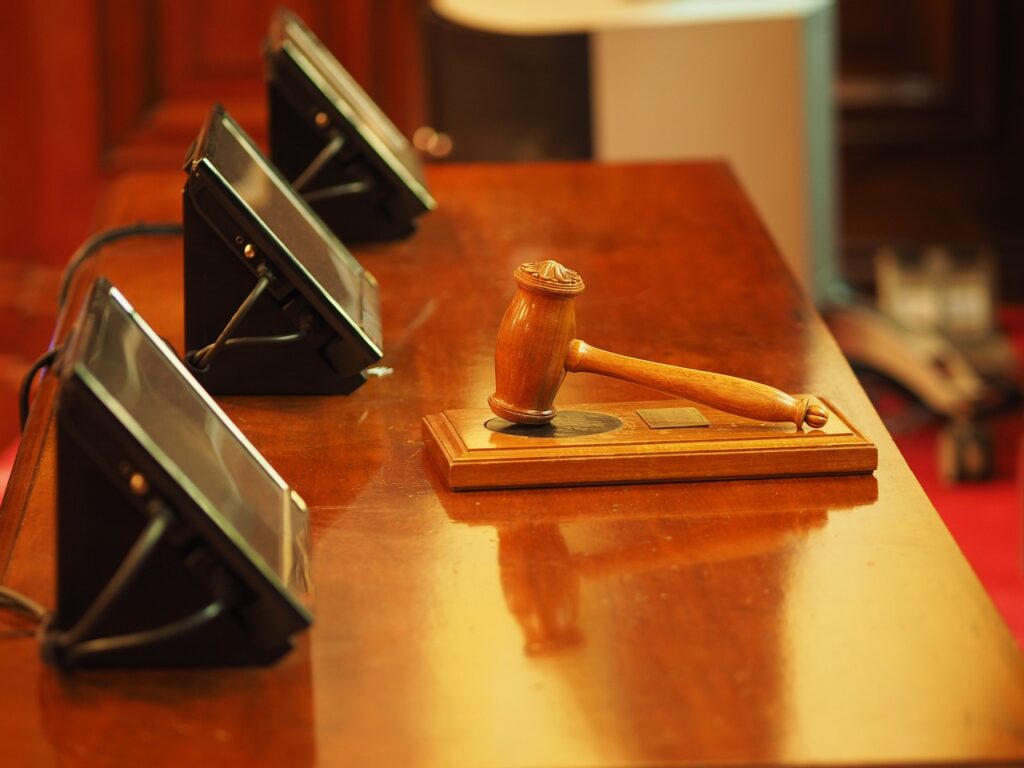Published On: 7 October, 2023
RYLAND v. FLETCHER
|
Name of the case |
John Rylands and Jehu Horrocks v. Thomas Fletcher |
|
Date of the case |
17th July 1868 |
|
Jurisdiction |
In the House of Lords |
|
Citation |
[1868] UKHL 1, [1868] LR 3 HL 330 |
|
Petitioner |
John Rylands |
|
Respondent |
Thomas Fletcher |
|
Bench |
Lord Cavins LL, Lord Cranworth |
|
Law Involved |
Law of Tort |
INTRODUCTION:
Ryland v Fletcher is one of the most pivotal and renowned cases that established the doctrine of Strict Liability within the field of tort law. This case served as a catalyst for the adjudication of numerous subsequent cases concerning issues of nuisance and liability in instances of negligence. Under the Strict Liability, “An individual will be legally responsible for the harm suffered by the plaintiff even in the absence of fault by the individual”. This legal principle primarily centers on the idea that if a person directly or indirectly engages in an activity that causes harm to another party, regardless of whether they have taken necessary precautions or met safety requirements and without any fault or criminal intent, they are legally accountable for the harm suffered by the plaintiff on behalf of the defendant.
FACTS:
- The Plaintiff, Mr. Thomas Fletcher, held a lease for a coal mine, while the Defendant, Mr. John Ryland, owned a mill.
- John Rylands wanted to build a reservoir on leased land to supply water to his textile mill. Nearby, Thomas Fletcher operated mines, including some that extended beneath the land where Rylands planned to build the reservoir.
- Rylands hired builders to construct a reservoir on his property in 1860 to use it to supply water to the Ainsworth Mill. Rylands hired a skilled engineer to handle the construction instead of taking an active role in it.
- While building the reservoir, the contractors discovered a series of old coal shafts and passages under the land filled loosely with soil and debris, which joined up with Thomas Fletcher’s adjoining mine.
- Instead of blocking these shafts up, the contractors left them.
- On 11 December 1860, shortly after being filled for the first time, Rylands’ reservoir burst and flooded Fletcher’s mine, the Red House Colliery, causing £937 worth of damage. Fletcher managed to remove the water, but on April 17, 1861, his pump broke, causing the mine to overflow once more.
- At this stage, a mines inspector was brought in, and the sunken coal shafts were discovered. On November 4th, 1861, Fletcher filed a lawsuit against Rylands and the landowner, Jehu Horrocks. The plaintiff sued in connection with the flooding of his mine.
ISSUES RAISED:
- Were the defendants responsible for any negligence, even if they weren’t personally negligent?
- Can they be held responsible for any negligence committed by the contractor they hired to construct the reservoir?
PLAINTIFF’S ARGUMENTS:
The loss suffered by the plaintiff is a result of the respondent’s negligence. It is the respondent’s responsibility to ensure the safety of things under his control. Even though the harm to the plaintiff wasn’t intentional, the respondent is still liable for his negligent actions.
RESPONDENT’S ARGUMENTS:
If the defendant has taken reasonable and diligent care and is maintaining it meticulously, and if the release of the hazardous substance is caused by the wrongful actions of a third party or a stranger, then the rule should not be applicable. The plaintiff cannot seek damages in cases where the wrongful act is carried out by a stranger, meaning someone who is neither the defendant’s employee nor under the defendant’s control.
INITIAL TRIAL JUDGMENT:
The trial court initially ruled in favor of the defendants, stating that they were unaware of the broken, filled-in shaft from the abandoned mine, which was the source of the flooding. As a result, the defendants were not held responsible for any damage to the plaintiff. The trial court’s judgment favored the Defendants. In December 1864, a court order led to the appointment of an arbitrator from the Exchequer of Pleas. The arbitrator found the independent contractors responsible for negligence since they were aware of the old mine shafts but failed to address them properly. The arbitrator also concluded that Rylands had no way of knowing about the mine shafts, so he couldn’t be held accountable.
APPEAL TO EXCHEQUER CHAMBER:
Following the plaintiffs’ appeal in 1866, the case was referred to the Exchequer Chamber for a decision. The Chamber reversed the lower court’s decision and imposed ‘strict liability’ on the defendants. However, during that time, the term ‘strict liability’ had no established place in tort law. It didn’t neatly fit into established categories like Trespass, Nuisance, or Negligence. Blackburn J, a judge, compared the situation to trespass involving dangerous animals, stating that anyone who knowingly keeps a dangerous item on their land must bear the responsibility and consequences if that item causes any damage.
APPEAL TO THE HOUSE OF LORDS:
In 1868, when the defendants appealed to the House of Lords, the court reaffirmed the Chamber’s judgment but with some modifications. Lord Cairns, a prominent judge, ruled that the principle of Strict Liability, as articulated by Blackburn J, should only be applied to the ‘non-natural’ use of one’s land, distinct from ‘any purpose’ mentioned in the previous decision. Lord Cairns shifted the focus from the tendency of water to escape from the defendant’s land to the unnatural use of the defendant’s land, particularly in setting up a reservoir near a coal mine.
EXCEPTIONS TO THE STRICT LIABILITY RULE:
Plaintiff’s Actions: If the escape of the substance or thing causing harm resulted from the plaintiff’s actions and the defendant had no involvement in it.
Act of God: If the escape of the substance or thing was a consequence of natural events beyond human control, often referred to as an “act of God.”
Irrational or Supernatural Force: If the escape occurred due to a force that is irrational or beyond the realm of normalcy, similar to an act of God, but encompassing unforeseeable and rare events.
Act of a Stranger: If the escape resulted from the actions of an unrelated third party, over whom the defendant had no control or ability to foresee or manage the situation created by that third party.
CONCLUSION:
The rule established in this case has had a significant impact on situations where the owner’s liability is in question. The concept of ‘Strict Liability’ imposes a duty on individuals who bring hazardous substances onto their land, thereby increasing their responsibility towards others. This case holds particular relevance for India, given our current developmental phase, as this rule has a substantial influence in this era.
In the case of MC Mehta, the principle of ‘Absolute Liability’ was introduced due to the preference for ‘Strict Liability.’ Consequently, this rule places a responsibility on individuals to take proper care of dangerous substances that could harm others.
The rule outlined in this case has provided a framework for the Indian judiciary to address cases in which the owner’s negligence is not in dispute, yet they must be held accountable for all damages.
In the modernization era, the concept of ‘Strict Liability’ plays a crucial role in making individuals accountable for their actions, whether intentional or negligent. It obliges them to use their property reasonably and avoid causing inconvenience to their neighbors.
Moreover, this principle has given rise to the concept of ‘Absolute Liability,’ which is highly relevant and valuable in today’s world.




